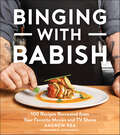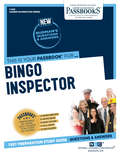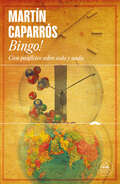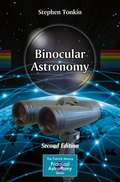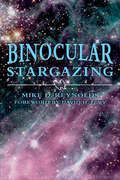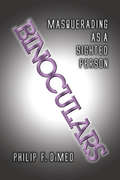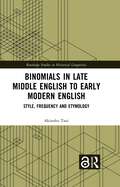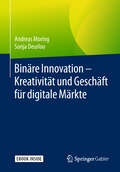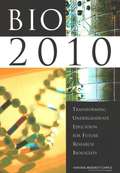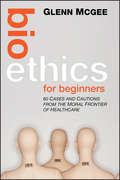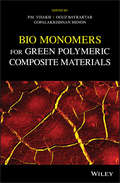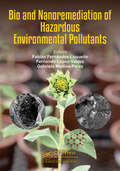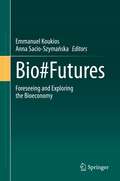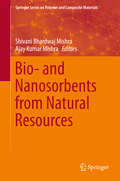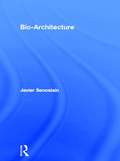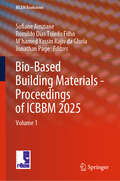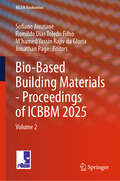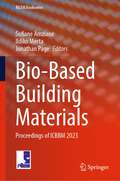- Table View
- List View
Binghamton University (College Prowler)
by Scott KutscherUnlike other guides that jam everything into a five-pound book and devote only two pages to each college, this single-school guidebooks give students only the schools they want and all the information they need.
Binging Family: Die Konzeption von Familie in der Video-on-Demand-Serie
by Jakob KelschIn diesem Open-Access-Buch zeigt Jakob Kelsch, wie sich in der US-amerikanischen TV-Serie der 1950er und 1960er Jahre der Mythos der patriarchal-strukturierten Kernfamilie als Ideal des familiären Zusammenlebens herausbildete. Trotz Phasen der Dekonstruktion und der zunehmenden Repräsentation problematischer und ethnisch wie sozial diverser Familienverhältnisse erweist sich dieser Mythos bis heute als äußerst persistent. Der durch den Digitalisierungsprozess bedingte Aufstieg der Streamingdienste und der Siegeszug deren serieller Erzeugnisse brachte eine inhaltliche Diversifizierung des Genres Familienserie und eine zunehmende narrative Komplexität mit sich. Doch auch diese kann nur an der Oberfläche des tief im kulturellen Wissen verankerten Mythos der heteronormativen Kernfamilie rütteln.
Binging with Babish: 100 Recipes Recreated from Your Favorite Movies and TV Shows
by Andrew ReaThe New York Times bestselling cookbook based on the hit YouTube show for foodie fans of film and TV—with an introduction by Jon Favreau.On his popular cooking show Binging with Babish, Andrew Rea shares a delectable recipe based on a favorite TV show or film, such as the babka from the classic Seinfeld episode, the beef bourguignon from Julie & Julia, or the timpano from Big Night. This cookbook includes these and many other fan-favorite recipes. Readers will find everything from new weeknight staples, like Bubba's shrimp from Forrest Gump, to special occasion treats like the chocolate lava cake from Jon Favreau’s Chef—which the actor/director made himself during a guest appearance on Rea’s show. Complete with behind-the-scenes stories and never-seen-before photos, as well as answers to frequently asked fan questions, Binging with Babish is a must-have companion to the wildly popular YouTube show.
Bingo Inspector: Passbooks Study Guide (Career Examination Series)
by National Learning CorporationThe Bingo Inspector Passbook® prepares you for your test by allowing you to take practice exams in the subjects you need to study. It provides hundreds of questions and answers in the areas that will likely be covered on your upcoming exam.
Bingo!
by Martín CaparrósObservaciones, pensamientos e ideas a propósito de los números, desde el 00 al 99. Sucesos históricos, supersticiones, la actualidad, la política, el mundo. Originalmente publicados en forma semanal en las revistas Veintidós y Veintitrés. Al principio fue un desafío: «Ahora que cumplimos 69 números, a que no te atrevés a escribir una columna sobre el número 69», le dijo el editor de Veintitrés, la revista donde entonces escribía. Caparrós lo hizo, por supuesto, y después pensó que por qué no el 70 y el 71 y el 72 y así de seguido, hasta llenar el álbum de las cifras de dos dígitos. Escritos al calor del nuevo milenio, los cien ensayos breves de este libro terminan siendo tan imprevisibles como un dado lanzado al azar. Del 00 al 99, esta especie de cábala de temas urgentes, argentinos o mundiales, políticos, sociales, filosóficos es quizás el libro más original de Martín Caparrós, el que lo elevó a la categoría de gran contador de historias. Críticas:«Caparrós construye una serie heterogénea en temas y saberes, y halla en su plan numérico tanto la sujeción que las reminiscencias insalvables de algunas cifras le imponen como la libertad para referir el hallazgo de cualquier cosa que otras le permiten».Patricio Lennard, Radar, Página/12 «Caparrós es una manera de ver y entender el mundo».Carles Geli, Babelia«Martín Caparrós, uno de los más geniales cronistas contemporáneos, depura de manera exquisita, emocionada, vibrante y distanciada una prosa de un poderío narrativo excepcional».Fernando R. Lafuente, ABC Cultural «Un perturbador sistemático, un sembrador de dudas».Francesca Lazzarato, Il Manifesto«Su prosa y su mirada son un reactivo fuerte para almas sensibles o amigas de lo políticamente correcto».Leila Guerriero, El País «Convence tanto como seduce».Edmundo Paz Soldán, La Tercera
Binocular Astronomy (The Patrick Moore Practical Astronomy Series)
by Stephen TonkinBinoculars have, for many, long been regarded as an "entry level" observational tool, and relatively few have used them as a serious observing instrument. This is changing! Many people appreciate the relative comfort of two-eyed observing, but those who use binoculars come to realize that they offer more than comfort. The view of the stars is more aesthetically pleasing and therefore binocular observers tend to observe more frequently and for longer periods. "Binocular Astronomy", 2nd edition, extends its coverage of small and medium binoculars to large and giant (i.e., up to 300mm aperture) binoculars and also binoviewers, which brings the work into the realm of serious observing instruments. Additionally, it goes far deeper into the varying optical characteristics of binoculars, giving newcomers and advanced astronomers the information needed to make informed choices on purchasing a pair. It also covers relevant aspects of the physiology of binocular (as in "both eyes") observation. The first edition of this title was praised for its suggested objects for observation and especially for the finder charts for each object. In this second edition, this section is expanded in three ways. There are new objects, with more information on each object, and a re-organization of the objects for binoculars for easier selection for readers. "Binocular Astronomy" 2nd Edition puts an emphasis on understanding binoculars and their use. The additional content in this second edition reflects the latest developments in technology, available testing techniques, and practical ideas for binocular use. It also responds to the substantially positive reviews of the first edition, and is now even better suited to its target readership.
Binocular Stargazing
by Mike D ReynoldsA guide to viewing stars, the moon, planets, meteors, comets, and more through binoculars. Many stargazers assume they must invest hundreds or even thousands of dollars in equipment before they can enjoy the wonders of the night sky. The truth is, though, that all you need is a simple pair of binoculars. This handy guide explains how to choose binoculars. This handy guide explains how to choose binoculars and use them to observe everything from comets to solar eclipses. Ideal for amateur astronomers of all ages, Binocular Stargazing is the perfect way to see the night sky through new eyes. Information on current binocular brands and models Extensive catalog of celestial objects Lists of what to look for in each season Instructions for safely viewing eclipses Tips on recording your observations
Binocular Vision: An Inquiry into Psychoanalytic Techniques and Field Theory
by Elena MolinariBinocular Vision: An Inquiry into Psychoanalytic Techniques and Field Theory explains field theory from a Bionian perspective, while exploring the relationship between art and psychoanalysis. Elena Molinari starts from Bion’s double definition to explore the relationship between the conscious and unconscious thought process. She looks at a wide range of specific situations where field theory can be beneficial, from mother-baby therapy with a borderline mother, couple and group therapy, and the relationship of female subjectivity between an analyst and an adolescent analysand. In each situation, Molinari unpicks what Binocular Vision might mean as a transformative process used to explore the primitive parts of the mind. By doing so, she brings the reader back to the earliest developments of the primary relationship between analyst and client, and how this process can unite the psychoanalytic process and the artistic process. The book has been written for psychotherapists approaching and utilising field theory in child and adult psychoanalysis, and offers vital knowledge to clinicians working with patients in primitive states.
Binocular Vision: An Inquiry into Psychoanalytic Techniques and Field Theory
by Elena MolinariBinocular Vision: An Inquiry into Psychoanalytic Techniques and Field Theory explains field theory from a Bionian perspective, while exploring the relationship between art and psychoanalysis.Elena Molinari starts from Bion’s double definition to explore the relationship between the conscious and unconscious thought process. She looks at a wide range of specific situations where field theory can be beneficial, from mother-baby therapy with a borderline mother, couple and group therapy, and the relationship of female subjectivity between an analyst and an adolescent analysand. In each situation, Molinari unpicks what Binocular Vision might mean as a transformative process used to explore the primitive parts of the mind. By doing so, she brings the reader back to the earliest developments of the primary relationship between analyst and client, and how this process can unite the psychoanalytic process and the artistic process.The book has been written for psychotherapists approaching and utilising field theory in child and adult psychoanalysis, and offers vital knowledge to clinicians working with patients in primitive states.
Binoculars
by Philip F. DimeoFor over 14 years, Philip DiMeo, a talented cartoonist and social worker, led a double life, masquerading as a fully sighted person, while becoming blind. What prompted him to hide his condition? Pride, and fear that if his impending blindness were discovered he would lose all that was important. He concealed his vision loss, a secret that he believed could potentially ruin his life, but in hindsight opened doors. At most social functions, fearful that he would trip, bump into someone, or knock something over, his wife propelled him around. Ignoring warnings from his ophthalmologist, he continued driving despite a series of auto accidents which included driving onto railroad tracks while an oncoming train approached. Philip reveals that, despite diagnoses by three ophthalmologists and three optometrists, he denied having retinitis pigmentosa, an inherited degenerative eye disease that causes severe vision impairment and often blindness. When Philip finally confronted his disability, he found that the challenges of his vision loss were the springboard to achievements to come. Binoculars is a sensitive, amazing, and astonishingly revealing first-hand account of a man who achieves incredible feats with his courage and talent, while finally coming to terms with his blindness
Binomial Ideals (Graduate Texts in Mathematics #279)
by Takayuki Hibi Jürgen Herzog Hidefumi OhsugiThis textbook provides an introduction to the combinatorial and statistical aspects of commutative algebra with an emphasis on binomial ideals. In addition to thorough coverage of the basic concepts and theory, it explores current trends, results, and applications of binomial ideals to other areas of mathematics. The book begins with a brief, self-contained overview of the modern theory of Gröbner bases and the necessary algebraic and homological concepts from commutative algebra. Binomials and binomial ideals are then considered in detail, along with a short introduction to convex polytopes. Chapters in the remainder of the text can be read independently and explore specific aspects of the theory of binomial ideals, including edge rings and edge polytopes, join-meet ideals of finite lattices, binomial edge ideals, ideals generated by 2-minors, and binomial ideals arising from statistics. Each chapter concludes with a set of exercises and a list of related topics and results that will complement and offer a better understanding of the material presented.Binomial Ideals is suitable for graduate students in courses on commutative algebra, algebraic combinatorics, and statistics. Additionally, researchers interested in any of these areas but familiar with only the basic facts of commutative algebra will find it to be a valuable resource.
Binomials in Late Middle English to Early Modern English: Style, Frequency and Etymology (Routledge Studies in Historical Linguistics)
by Akinobu TaniThis book charts the development of style and lexicon in the English language from Late Middle English to Early Modern English through the analysis of binomials across a wide range of texts and genres.The volume elucidates the forms, functions, and origins of binomials, otherwise understood as word pairs, such as “safe and sound,” as they manifest in representative prose texts from the fourteenth and fifteenth centuries and in the Helsinki Corpus from the fourteenth through to the early eighteenth centuries. The book begins with cross-comparative analyses of binomials, examining their frequency, etymological makeup, and repetition in prose texts including Chaucer and Malory to explore the stylistic characteristics of each text, toward zooming out to examine their development in texts across different genres, from political to philosophical to legal texts, in the Helsinki Corpus. In charting binomial development over both time and text type, the volume offers readers a unique historical perspective into the evolution of phraseology from Late Middle English through to Early Modern English and in turn, a solid foundation for future research on lexical development in the English language.This book will be of interest to scholars in English historical linguistics, English stylistics, English corpus linguistics, and English lexicology.Chapter 8 of this book is freely available as a downloadable Open Access PDF at http://www.taylorfrancis.com under a Creative Commons Attribution-NonCommercial-NoDerivatives (CC-BY-NC-ND) 4.0 International license.
Binäre Innovation – Kreativität und Geschäft für digitale Märkte
by Andreas Moring Sonja DeurlooDieses Buch beschreibt eine neue Innovationsmethode, die sich an der Logik von binären Systemen und Algorithmen orientiert und diese für Produkte, Services und Unternehmen nutzbar macht. Bisherige Innovationsmethoden und Business Development-Modelle stammen im Grunde aus analogen Verfahren, Denkmustern und Märkten. Sie sind jedoch nicht geeignet für sich überproportional schnell entwickelnde Märkte und Technologien von heute in der Industrie 4.0 und für den Kunden 4.0. Moderne, digitale Innovationen und Geschäfte brauchen auch eine digitale Methode. BIDAC, das Binary Innovation Development Accelerator Concept, gibt Unternehmen und Praktikern das richtige Werkzeug an die Hand, schnell zu sein und trotzdem die richtigen Entscheidungen zu treffen.
Bio 2010: Transforming Undergraduate Education For Future Research Biologists
by Committee on Undergraduate Biology Education to Prepare Research Scientists for the 21st CenturyBiological sciences have been revolutionized, not only in the way research is conducted -- with the introduction of techniques such as recombinant DNA and digital technology -- but also in how research findings are communicated among professionals and to the public. Yet, the undergraduate programs that train biology researchers remain much the same as they were before these fundamental changes came on the scene. This new volume provides a blueprint for bringing undergraduate biology education up to the speed of today’s research fast track. It includes recommendations for teaching the next generation of life science investigators, through: Building a strong interdisciplinary curriculum that includes physical science, information technology, and mathematics. Eliminating the administrative and financial barriers to cross-departmental collaboration. Evaluating the impact of medical college admissions testing on undergraduate biology education. Creating early opportunities for independent research. Designing meaningful laboratory experiences into the curriculum. The committee presents a dozen brief case studies of exemplary programs at leading institutions and lists many resources for biology educators. This volume will be important to biology faculty, administrators, practitioners, professional societies, research and education funders, and the biotechnology industry.
Bio Ethics for Beginners
by Glenn McgeeHow far is too far? 60 cases illustrating modern bioethical dilemmas Bioethics for Beginners maps the giant dilemmas posed by new technologies and medical choices, using 60 cases taken from our headlines, and from the worlds of medicine and science. This eminently readable book takes it one case at a time, shedding light on the social, economic and legal side of 21st century medicine while giving the reader an informed basis on which to answer personal, practical questions. Unlocking the debate behind the headlines, this book combines clear thinking with the very latest in science and medicine, enabling readers to decide for themselves exactly what the scientific future should hold.
Bio Logic: A Laboratory Manual for the Biological Sciences
by Chad Thompson Michael Priano Nathan Dubowsky Glenworth Richards Alex ZemcovWith this laboratory manual, students can assume the role of the biological scientist as they observe the phenomena of life and life processes. Students will develop generalizations to explain observations. They will confirm, modify, or reject generalizations as they continue to make predictions and collect additional observations as they experience how science"works." With some effort, this laboratory manual, and the sage advice of a laboratory instructor, the time spent in these efforts will prove to be most interesting and intellectually rewarding.
Bio Monomers for Green Polymeric Composite Materials
by Oguz Bayraktar Visakh P. M.Presents new and innovative bio-based monomers to replace traditional petrochemical-based building blocks Featuring contributions from top experts in the field, this book discusses new developments in the area of bio monomers and green polymeric composite materials. It covers bio monomers, green polymeric composites, composites from renewable resources, bio-sourced polymers, green composites, biodegradation, processing methods, green polymeric gels, and green polymeric membranes. Each chapter in Bio Monomers for Green Polymeric Composites Materials presents the most recent research and technological ideas in a comprehensive style. It examines bio monomers for green polymer and the processing methods for the bio nanocomposites. It covers the preparation, characterization, and applications of bio-polymeric materials based blends, as well as the applications of biopolymeric gels in medical biotechnology. The book also explores the properties and applications of gelatins, pectins, and carrageenans gels. Additionally, it offers a plethora of information on green polymeric membranes; the bio-degradation of green polymeric composites materials; applications of green polymeric composites materials; hydrogels used for biomedical applications; and the use of natural aerogels as thermal insulations. Introduces readers to the innovative, new bio-based monomers that are taking the place of traditional petrochemical-based building blocks Covers green polymers, green composites, bio-sourced polymers, bio nanocomposites, biodegradable polymers, green polymer gels, and membranes Features input from leading researchers immersed in the area of study Bio Monomers for Green Polymeric Composites Materials is suitable for academics, researchers, scientists, engineers and advanced students in the field of bio monomers and green polymeric composites materials.
Bio and Nanoremediation of Hazardous Environmental Pollutants
by Fernando Fabián GabrielaThis book is a compendium of knowledge about nanomaterials and strategies for bioremediation over hazardous environmental pollutants. The book is divided into 2 sections. Section 1 deals with the polluted environment, where it explains that soil is in serious danger and highlights the primary hazardous pollutants. Besides, this section covers algae, autochthonous, introduced, or genetically modified organisms that are used to degrade hazardous contaminants. In Section 2, Bio- and Nanoremediation are shown through synthesis, green synthesis and molecular farming, and their applications or impacts. Moreover, this discusses bio- and nano-remediation, working together for better performance, organisms, and nanomaterials for environmental remediation.
Bio#Futures: Foreseeing and Exploring the Bioeconomy
by Emmanuel Koukios Anna Sacio-SzymańskaThis volume presents a timely recognition, warning and mapping of the fast approaching wave, or “bio-tsunami”, of global socio-technical transformation, built by a much wider spectrum of converging powers, including biotechnology, new agriculture, novel foods, health, quality of life, environment, energy, sustainability, education, knowledge management, and design of smart applications. The book contains eight sections corresponding to different clusters of bioeconomic and socio-technical change, as identified by the editors’ “Scanning the Horizon” foresight research; it also offers an integrated view of the future bioeconomy landscape though the convergence of several technologies that affect everyday life. The clusters offer methodologies for forecasting the future bioeconomy, and how these predictions can affect target-setting and the orientation of policies and actions to manage cultural and societal change, and achieve sustainable development in less developed areas. The book will be of interest to researchers, producers, logistics experts, policy makers, regulators, business and financial institutions, and biotechnologists (e.g. geneticists, food experts, etc.).
Bio- and Bioinspired Nanomaterials
by Claudio Roscini Daniel Ruiz-Molina Fernando NovioA comprehensive overview of nanomaterials that are inspired by or targeted at biology, including some of the latest breakthrough research. Throughout, valuable contributions from top-level scientists illustrate how bionanomaterials could lead to novel devices or structures with unique properties. The first and second part cover the most relevant synthetic and bioinspired nanomaterials, including surfaces with extreme wettability properties, functional materials with improved adhesion or structural and functional systems based on the complex and hierarchical organization of natural composites. These lessons from nature are explored in the last section where bioinspired materials are proposed for biomedical applications, showing their potential for future applications in drug delivery, theragnosis, and regenerative medicine. A navigational guide aimed at advanced and specialist readers, while equally relevant for readers in research, academia or private companies focused on high added-value contributions. Young researchers will also find this an indispensable guide in choosing or continuing to work in this stimulating area, which involves a wide range of disciplines, including chemistry, physics, materials science and engineering, biology, and medicine.
Bio- and Nanosorbents from Natural Resources (Springer Series on Polymer and Composite Materials)
by Ajay Kumar Mishra Shivani Bhardwaj MishraThis book reviews the work in the field of nanoadsorbents derived from natural polymers, with a special emphasis on materials finding application in water remediation. It includes natural materials both with an organic or an inorganic skeleton, from which the nanomaterials can be made. Those nanomaterials can therefore be used to reinforce other matrices and in their pristine form have an extraordinary adsorption efficiency. Being of natural or biological origin, the materials described in this book distinguish themselves as eco-friendly and non-toxic. The book describes how these benefits of the described materials can be combined and exploited. It will thus appeal to chemists, nanotechnologists, environmental engineers and generally all scientist working in the field of water pollution and remediation as an inspiration for the innovation toward new technologies.
Bio-Architecture
by Javier SenosiainBio-Architecture studies the natural principles of animal and human constructions from several different perspectives, and presents a great part of the knowledge that gives origin and shape to built form. Organic architecture offers a design approach arising from natural principles, bringing us back to local history, tradition, and cultural roots to give us built forms which are in harmony with nature. It also shows how architects can take advantage of the resources that contemporary technology has placed within our grasp.Bio-Architecture is a unique book that studies the natural principles of animal and human constructions from several different perspectives and looks at what gives origin and shape to built form. The text gives an informative, inspiring overview of the drive toward organically informed design both intrinsically and aesthetically using a wide variety of international examples.Javier Senosiain is an architect and an historian. He has pursued his interest in Organic Architecture across the globe drawing parallels between Buckminster Fuller's Geodesic dome and the spider's web; between Santiago Calatrava's Cathedral of St John in NY and the roots of a tree. Where nature has inspired form, Senosiain has made a career of analyzing and applying the principles he sees in some very creative writing and architecture.
Bio-Based Building Materials - Proceedings of ICBBM 2025: Volume 1 (RILEM Bookseries #60)
by Jonathan Page Sofiane Amziane Romildo Dias Toledo Filho M'hamed Yassin Rajiv da GloriaThis book gathers peer-reviewed contributions presented at the 6th International Conference on Bio-Based Building Materials (ICBBM), held in Rio de Janeiro, Brazil on June 17-20, 2025. Focusing on bio-based building materials (3BM) as well as their applications in sustainable building constructions, the contributions highlight the latest findings in this fast-growing field, addressing topics such as natural fibres- and aggregates, ramped earth, innovative hybrid composites based on bio-based ingredients, novel sustainable binders, energy efficiency aspects- and life cycle analysis of these materials.
Bio-Based Building Materials - Proceedings of ICBBM 2025: Volume 2 (RILEM Bookseries #61)
by Jonathan Page Sofiane Amziane Romildo Dias Toledo Filho M'hamed Yassin Rajiv da GloriaThis book gathers peer-reviewed contributions presented at the 6th International Conference on Bio-Based Building Materials (ICBBM), held in Rio de Janeiro, Brazil on June 17-20, 2025. Focusing on bio-based building materials (3BM) as well as their applications in sustainable building constructions, the contributions highlight the latest findings in this fast-growing field, addressing topics such as natural fibres- and aggregates, ramped earth, innovative hybrid composites based on bio-based ingredients, novel sustainable binders, energy efficiency aspects- and life cycle analysis of these materials.
Bio-Based Building Materials: Proceedings of ICBBM 2023 (RILEM Bookseries #45)
by Jonathan Page Sofiane Amziane Ildiko MertaThis book gathers peer-reviewed contributions presented at the 5th International Conference on Bio-Based Building Materials (ICBBM), held in Vienna, Austria, on June 21-23, 2023. Focusing on bio-based building materials (3BM) as well as their applications in sustainable building constructions, the contributions highlight the latest findings in this fast-growing field, addressing topics such as natural fibres- and aggregates, ramped earth, innovative hybrid composites based on bio-based ingredients, novel sustainable binders, energy efficiency aspects- and life cycle analysis of these materials.


